Ambercup squash, also known as Cucurbita maxima, is a variety of winter squash that boasts a striking appearance and delightful flavor.
With its vibrant orange skin and deep ridges, this squash commands attention on the kitchen counter or market stall. Once cut open, the bright orange flesh reveals a dense, creamy texture that lends itself beautifully to various culinary applications.
Ambercup squash offers a delightfully sweet and nutty taste, making it a versatile ingredient for both savory and sweet dishes.
Its robust flavor profile pairs exceptionally well with warm spices like cinnamon, nutmeg, and ginger, as well as earthy herbs like sage and thyme.
The dense flesh holds its shape remarkably well during cooking, making it an excellent choice for roasting, baking, or incorporating into hearty stews and curries.
Beyond its culinary appeal, Ambercup squash boasts an impressive nutritional profile, rich in vitamins A and C, fiber, and potassium.
Its vibrant orange hue is a telltale sign of its abundance of beta-carotene, an antioxidant that supports eye health and a strong immune system.
Nutritional Benefits of Ambercup Squash
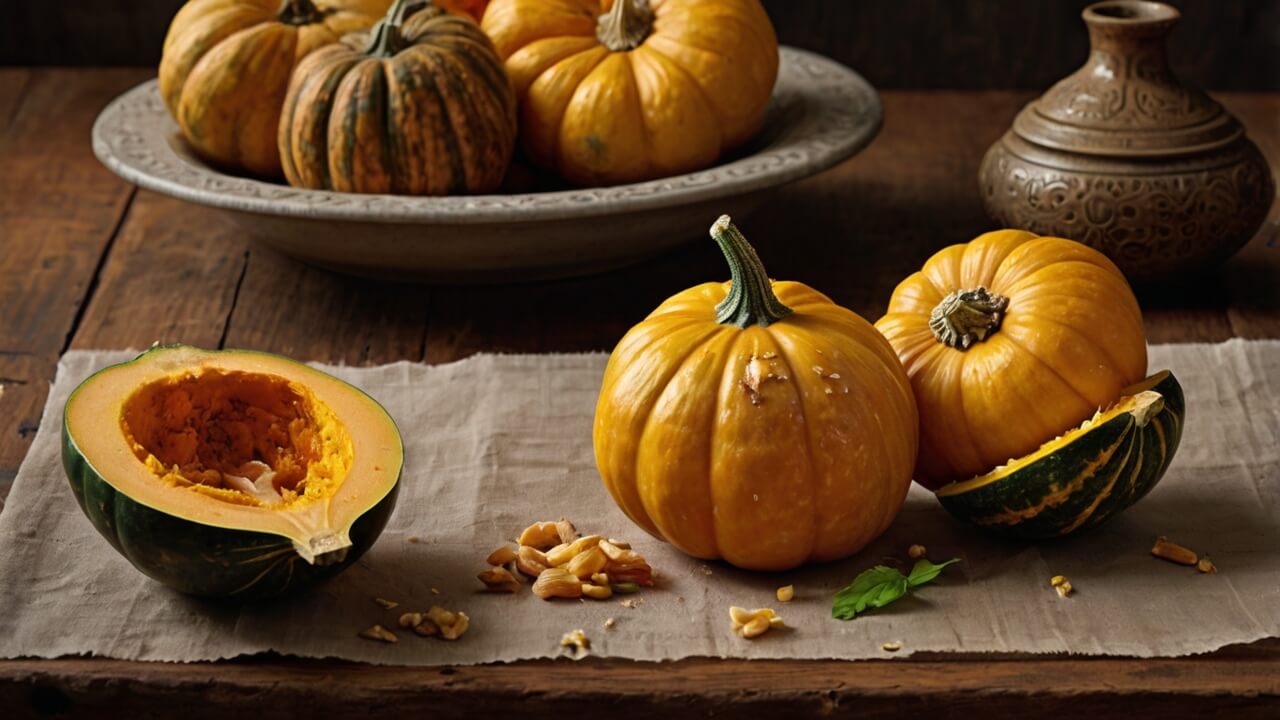
Ambercup squash is a nutrient-dense food that offers a wide range of health benefits. This vibrant winter squash is an excellent source of vitamins A and C, both of which are powerful antioxidants that support immune function and promote healthy skin and vision.
Additionally, Ambercup squash is rich in fiber, which aids in digestion and promotes feelings of fullness, making it a great choice for those following a weight management plan.
This squash variety also contains potassium, an essential mineral that helps regulate blood pressure and supports muscle function.
Ambercup squash is an excellent source of beta-carotene, a plant-based compound that the body converts into vitamin A.
Beta-carotene has been linked to a reduced risk of certain cancers and may also support eye health and protect against age-related macular degeneration.
Furthermore, Ambercup squash is a good source of folate, a B-vitamin that is crucial for cell growth and development, making it an important nutrient for pregnant women and those planning to conceive.
It also contains manganese, a mineral that plays a role in bone health, metabolism, and antioxidant defense.
With its impressive nutrient profile and versatility in the kitchen, incorporating Ambercup squash into your diet can be a delicious way to boost your intake of essential vitamins, minerals, and antioxidants.
Ambercup Squash Curry with Carrots and Quinoa
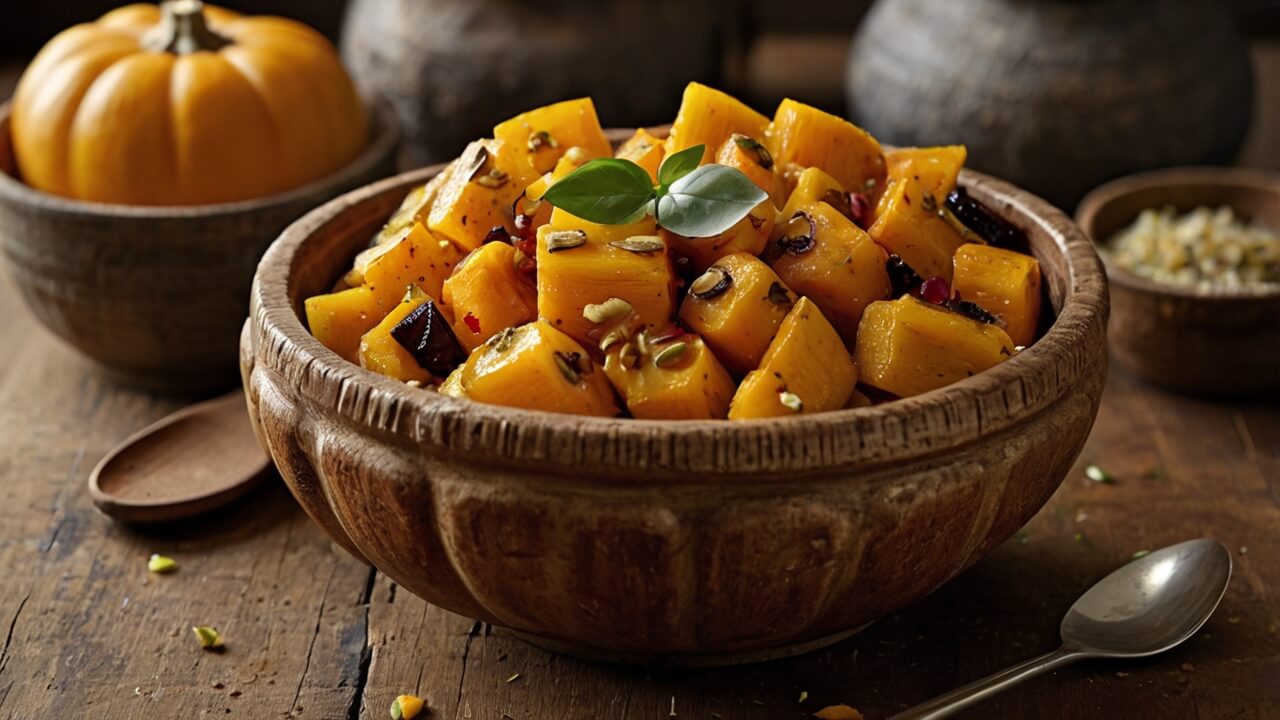
Ingredients:
- 1 Ambercup squash, peeled, seeded, and cubed
- 2 carrots, peeled and sliced
- 1 onion, diced
- 3 cloves garlic, minced
- 2 tablespoons curry powder
- 1 teaspoon ground cumin
- 1 teaspoon ground coriander
- 1 teaspoon grated fresh ginger
- 1 cup vegetable broth
- 1 can (13.5 oz) coconut milk
- 1 cup quinoa, rinsed
- Salt and pepper to taste
- Chopped cilantro for garnish
Instructions:
- In a large pot or Dutch oven, sauté the onion and garlic in a little oil or broth until fragrant and translucent.
- Add the cubed Ambercup squash, carrots, curry powder, cumin, coriander, and ginger. Stir to coat the vegetables with the spices.
- Pour in the vegetable broth and coconut milk. Bring the mixture to a simmer and cook for 15-20 minutes, or until the squash and carrots are tender.
- Meanwhile, cook the quinoa according to package instructions.
- Once the squash and carrots are cooked, use a potato masher or immersion blender to slightly mash and thicken the curry sauce, leaving some chunks for texture.
- Stir in the cooked quinoa and season with salt and pepper to taste.
- Garnish with chopped cilantro and serve hot.
Tips:
- For a creamier curry, blend the entire mixture until smooth before adding the quinoa.
- Adjust the amount of curry powder and spices to your desired level of heat and flavor.
- Substitute coconut milk with plant-based milk or broth for a lighter version.
- Add leafy greens like spinach or kale for extra nutrition.
- Serve with naan bread or basmati rice instead of quinoa for a traditional curry experience.
Baked Ambercup Squash
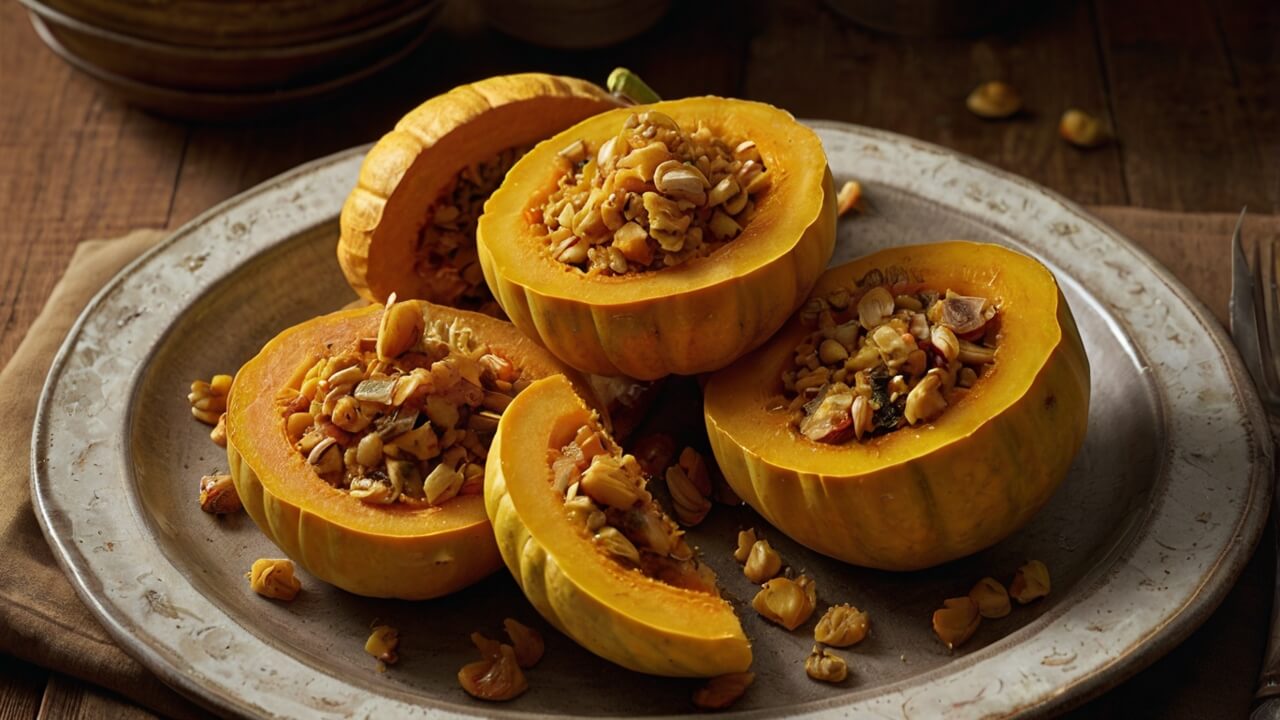
Ingredients:
- 1 Ambercup squash, halved lengthwise and seeds removed
- 2 tablespoons olive oil
- 1 teaspoon salt
- 1/2 teaspoon black pepper
- 2 tablespoons butter
- 2 tablespoons brown sugar (optional)
Instructions:
- Preheat your oven to 400°F (200°C).
- Using a sharp knife or a sturdy spoon, score the flesh of the squash halves in a crosshatch pattern, being careful not to pierce through the skin.
- Brush the cut sides of the squash with olive oil and season generously with salt and pepper.
- Place the squash halves, cut-side down, on a parchment-lined baking sheet.
- Bake for 40-50 minutes, or until the flesh is fork-tender and the skin is easily pierced.
- Remove the squash from the oven and let it cool slightly.
- Using a fork, gently fluff and separate the strands of squash flesh.
- Add butter and brown sugar (if using) to the squash flesh and mix well until fully incorporated.
Tips for Achieving the Perfect Baked Ambercup Squash:
- Scoring the flesh: Scoring the flesh in a crosshatch pattern allows the flavors to penetrate deeper and creates a beautiful, shredded texture when fluffed with a fork.
- Baking cut-side down: Baking the squash cut-side down helps to steam the flesh, resulting in a tender and moist texture.
- Butter and brown sugar (optional): Adding butter and brown sugar to the baked squash flesh creates a rich, caramelized flavor. Adjust the amounts to suit your taste preferences.
- Serving suggestions: Serve the baked Ambercup squash as a side dish, or use it as a base for other recipes, such as stuffed squash or squash fritters.
- Variations: Experiment with different seasonings and toppings, such as herbs, spices, nuts, or cheese, to create your own unique flavor combinations.
Roasted Ambercup Squash with Brown Butter
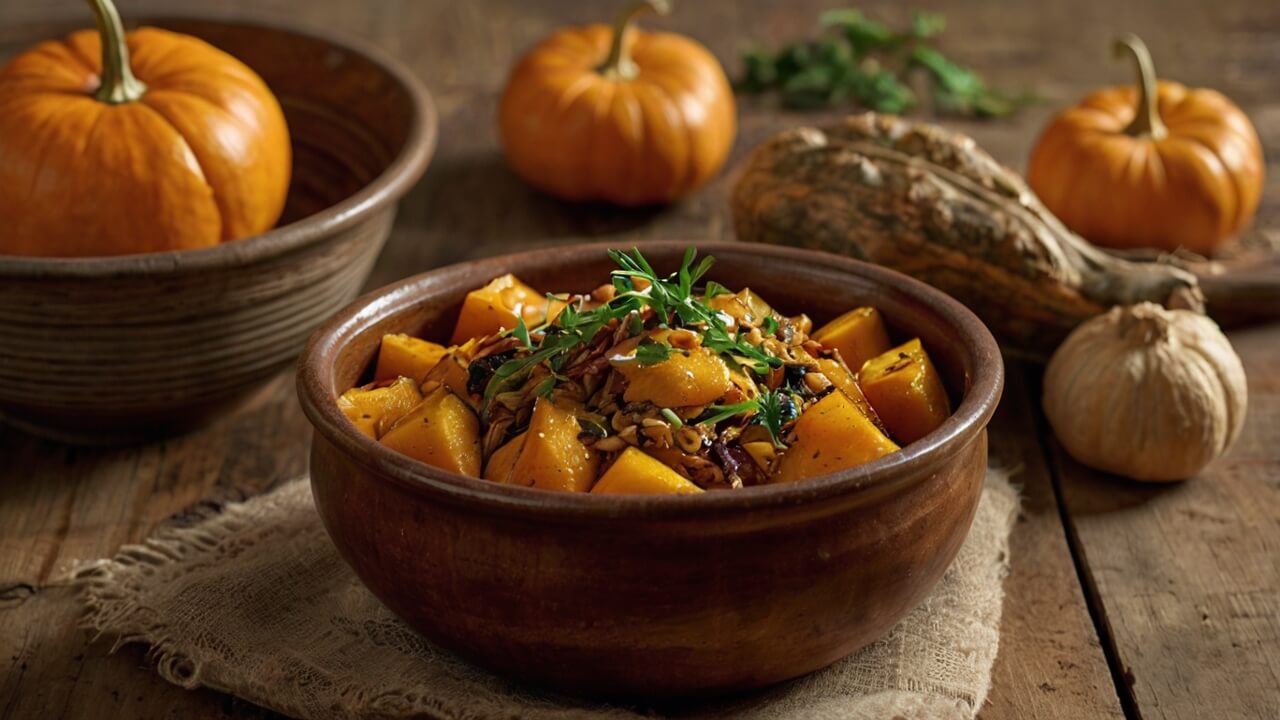
Ingredients:
- 1 large Ambercup squash, halved and seeded
- 4 tablespoons unsalted butter
- 2 tablespoons olive oil
- 1 teaspoon salt
- 1/2 teaspoon black pepper
- 2 tablespoons chopped fresh parsley
- 2 tablespoons grated Parmesan cheese (optional)
Instructions:
- Preheat your oven to 400°F (200°C).
- Brush the cut sides of the Ambercup squash with olive oil and season with salt and pepper.
- Place the squash halves, cut-side down, on a baking sheet lined with parchment paper or a silicone mat.
- Roast the squash for 40-50 minutes, or until it is fork-tender.
- While the squash is roasting, prepare the brown butter: In a small saucepan, melt the unsalted butter over medium heat. Continue cooking, swirling the pan occasionally, until the butter turns a deep golden brown and develops a nutty aroma. Be careful not to burn the butter.
- Once the squash is cooked, remove it from the oven and let it cool slightly.
- Scoop the flesh out of the squash halves and transfer it to a serving dish.
- Drizzle the brown butter over the roasted squash flesh, and sprinkle with chopped parsley and grated Parmesan cheese (if using).
Tips:
- For extra flavor, you can add a pinch of nutmeg or cinnamon to the roasted squash.
- If you prefer a sweeter taste, drizzle the squash with maple syrup or honey before serving.
- Garnish with toasted nuts, such as pecans or walnuts, for added crunch and nuttiness.
- Serve the roasted Ambercup squash as a side dish or a vegetarian main course, paired with a fresh green salad or crusty bread.
- To make this dish vegan, simply omit the Parmesan cheese or use a vegan cheese alternative.
Spiced Ambercup Squash Soup
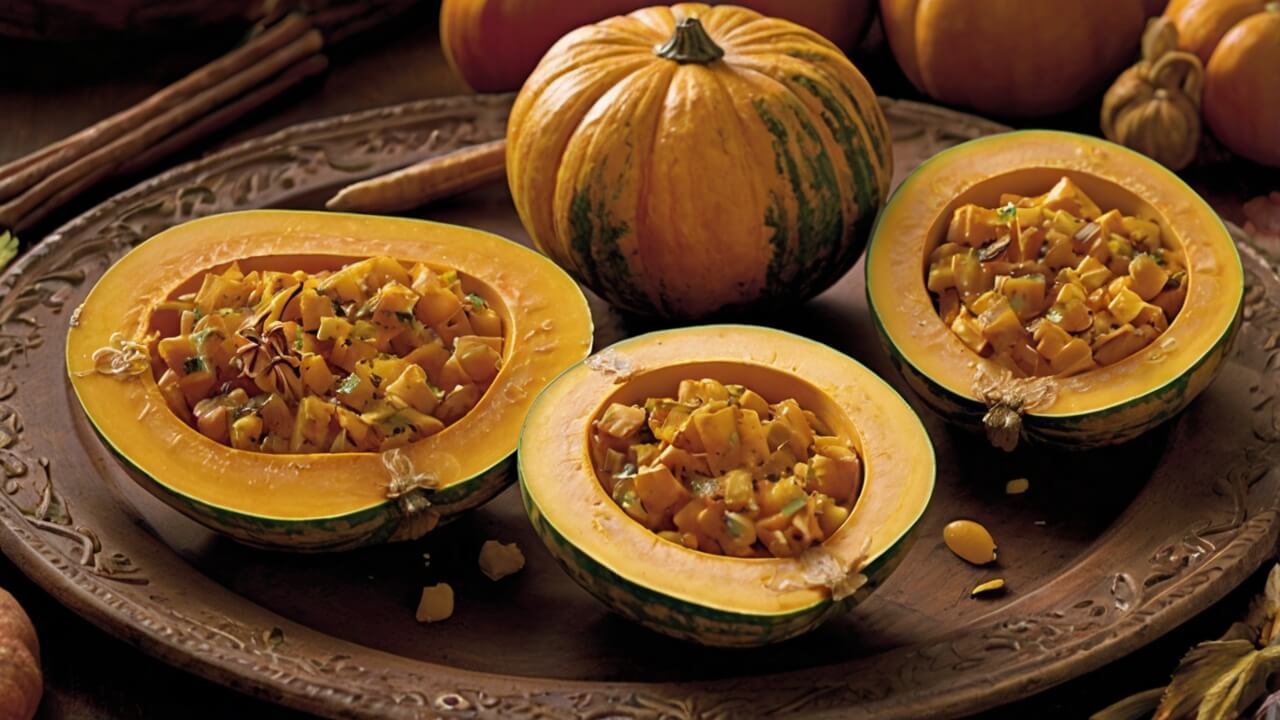
Ingredients:
- 1 large Ambercup squash, halved and seeded
- 2 tablespoons olive oil
- 1 onion, diced
- 3 cloves garlic, minced
- 1 teaspoon ground cumin
- 1 teaspoon ground coriander
- 1/2 teaspoon smoked paprika
- 1/4 teaspoon cayenne pepper (optional, for added heat)
- 4 cups vegetable or chicken broth
- 1 cup unsweetened almond milk (or milk of your choice)
- Salt and black pepper, to taste
- Chopped fresh cilantro or parsley for garnish
Instructions:
- Preheat your oven to 400°F (200°C).
- Place the halved Ambercup squash, cut-side down, on a baking sheet lined with parchment paper. Roast for 45-60 minutes, or until the squash is fork-tender.
- In a large pot or Dutch oven, heat the olive oil over medium heat. Add the diced onion and sauté for 5-7 minutes, or until translucent.
- Add the minced garlic and spices (cumin, coriander, smoked paprika, and cayenne pepper, if using). Cook for 1 minute, stirring constantly, until fragrant.
- Scoop the roasted Ambercup squash flesh from the skin and add it to the pot.
- Pour in the vegetable or chicken broth and almond milk. Bring the mixture to a simmer and cook for 10-15 minutes, allowing the flavors to meld.
- Using an immersion blender or a regular blender (working in batches if necessary), purée the soup until smooth and creamy.
- Season with salt and black pepper to taste.
- Ladle the soup into bowls and garnish with chopped fresh cilantro or parsley.
Tips:
- For a richer and creamier texture, you can substitute half of the almond milk with heavy cream or coconut milk.
- Adjust the spice level to your preference by increasing or decreasing the amount of cayenne pepper.
- Top the soup with crispy roasted chickpeas, croutons, or a drizzle of olive oil for added texture and flavor.
- Leftovers can be stored in an airtight container in the refrigerator for up to 4 days or frozen for later use.
- To make the soup vegan, use vegetable broth and a non-dairy milk alternative.
This warm and comforting Ambercup squash soup is packed with aromatic spices, creating a delightful blend of flavors. The natural sweetness of the roasted squash pairs beautifully with the savory spices, making it a perfect dish for chilly evenings or as a starter for a cozy meal.
Mashed Ambercup Squash

Ingredients:
- 1 large Ambercup squash, halved and seeded
- 4 tablespoons unsalted butter
- 1/2 cup milk or plant-based milk alternative
- 1/4 cup heavy cream or plant-based cream alternative (optional)
- 1 teaspoon salt
- 1/4 teaspoon ground black pepper
- 1/4 teaspoon ground nutmeg
Instructions:
- Preheat your oven to 400°F (200°C).
- Place the halved Ambercup squash, cut-side down, on a baking sheet lined with parchment paper or foil.
- Roast the squash for 45-60 minutes, or until a knife can easily pierce the flesh.
- Remove the squash from the oven and let it cool slightly.
- Scoop the roasted flesh out of the skin and transfer it to a large bowl.
- Add the butter, milk (or milk alternative), cream (if using), salt, pepper, and nutmeg to the bowl.
- Using a potato masher or an immersion blender, mash or puree the squash mixture until it reaches your desired consistency.
- Taste and adjust the seasoning as needed.
Tips:
- For a richer, creamier mash, use heavy cream or a plant-based cream alternative.
- Add a pinch of cayenne pepper or a sprinkle of fresh herbs like thyme or sage for extra flavor.
- Roast the squash until it’s very soft and tender for the smoothest mash.
- If the mash is too thick, add a splash of milk or cream to thin it out.
- Serve the mashed Ambercup squash warm, garnished with a pat of butter, chopped fresh herbs, or a drizzle of olive oil.
- Pair it with roasted meats, grilled vegetables, or use it as a side dish for your favorite meals.
Pasta with Roasted Ambercup Squash, Arugula, and Pine Nuts

Ingredients:
- 1 medium Ambercup squash, halved and seeded
- 2 tablespoons olive oil, plus more for drizzling
- Salt and freshly ground black pepper
- 8 ounces whole wheat or regular pasta
- 2 cups fresh arugula
- 1/4 cup toasted pine nuts
- 1/4 cup grated Parmesan cheese (optional)
- 2 cloves garlic, minced
- 2 tablespoons butter
- Juice of 1/2 lemon
Instructions:
- Preheat your oven to 400°F (200°C). Brush the cut sides of the Ambercup squash with olive oil and season with salt and pepper. Place cut-side down on a baking sheet and roast for 30-40 minutes, or until fork-tender.
- While the squash is roasting, bring a large pot of salted water to a boil. Cook the pasta according to package instructions until al dente. Drain and set aside.
- Once the squash is cool enough to handle, scoop out the flesh and mash it with a fork or potato masher.
- In a large skillet, heat 2 tablespoons of olive oil over medium heat. Add the minced garlic and sauté for 1 minute, until fragrant.
- Add the mashed Ambercup squash to the skillet and stir to combine with the garlic and olive oil. Season with salt and pepper to taste.
- Add the cooked pasta, arugula, pine nuts, and butter to the skillet. Toss everything together until the arugula is slightly wilted and the butter has melted.
- Remove the skillet from heat and squeeze the lemon juice over the pasta. Toss again to combine.
- Serve hot, drizzled with additional olive oil and topped with grated Parmesan cheese, if desired.
Tips:
- For a creamier texture, reserve some of the pasta cooking water and add a few tablespoons to the skillet when tossing everything together.
- Substitute the arugula with baby spinach or kale for a different flavor profile.
- Add a pinch of red pepper flakes or a sprinkle of nutmeg for extra warmth and depth of flavor.
- Garnish with chopped fresh herbs like parsley, basil, or chives for added freshness.
- Swap the pine nuts for toasted walnuts, pecans, or almonds for a different nutty crunch.
This pasta dish is a delightful way to showcase the rich, slightly sweet flavor of Ambercup squash. The combination of roasted squash, peppery arugula, and toasted pine nuts creates a harmonious blend of textures and flavors, making it a satisfying and nutritious meal.
Selecting and Storing Ambercup Squash
When selecting Ambercup squash, look for ones that are heavy for their size, with a dull, matte skin free of blemishes or soft spots. The stem should be intact, and the squash should feel solid and firm. Avoid any squash with cracks, punctures, or signs of decay.
For maximum freshness, store Ambercup squash in a cool, dry place, such as a pantry or basement, where the temperature ranges between 50°F and 60°F (10°C and 15°C). Avoid storing squash in the refrigerator, as the cold temperature can cause them to deteriorate more quickly.
Whole, uncut Ambercup squash can typically be stored for several months under ideal conditions. Once cut, wrap the pieces tightly in plastic wrap or store them in an airtight container in the refrigerator, where they will keep for up to a week.
When selecting and storing Ambercup squash, remember:
- Choose squash that are heavy, firm, and free of blemishes or soft spots.
- Leave the stem intact to prolong freshness.
- Store in a cool, dry place, away from direct sunlight.
- Refrigerate cut squash and use within a week.
By following these tips, you can ensure that your Ambercup squash remains fresh and flavorful for all your culinary creations.
Cooking Tips for Ambercup Squash
Roasting: One of the simplest and most flavorful ways to prepare Ambercup squash is to roast it. Preheat your oven to 400°F (200°C). Cut the squash in half lengthwise, scoop out the seeds, and place it cut-side down on a baking sheet lined with parchment paper or a silicone mat. Roast for 30-45 minutes, or until the flesh is fork-tender. You can also cube the squash and toss it with a little oil, salt, and pepper before roasting for a delicious side dish.
Baking: Ambercup squash is perfect for baking. Cut the squash in half lengthwise, scoop out the seeds, and place it cut-side up in a baking dish. Add a small amount of water or vegetable broth to the bottom of the dish to prevent the squash from drying out. Bake at 375°F (190°C) for 45-60 minutes, or until the flesh is tender when pierced with a fork.
Sautéing: For a quick and easy preparation, try sautéing cubed or sliced Ambercup squash. Heat a tablespoon of oil or butter in a skillet over medium-high heat. Add the squash and sauté for 5-7 minutes, stirring occasionally, until the squash is tender and lightly browned.
Steaming: Ambercup squash can also be steamed for a healthy and flavorful option. Cut the squash into cubes or slices, and place them in a steamer basket over boiling water. Cover and steam for 10-15 minutes, or until the squash is tender but still firm.
Seasoning: Ambercup squash has a naturally sweet and nutty flavor that pairs well with a variety of seasonings. Try tossing it with herbs like rosemary, thyme, or sage, or spices like cinnamon, nutmeg, or curry powder. You can also drizzle it with maple syrup, honey, or balsamic vinegar for added flavor.
No matter how you choose to prepare it, Ambercup squash is a versatile and delicious addition to any meal. Experiment with different cooking methods and seasonings to find your favorite way to enjoy this nutritious and flavorful squash.
Ambercup Squash in Plant-Based and Vegan Diets
Ambercup squash is an excellent choice for those following a plant-based or vegan diet. This versatile winter squash is naturally vegan and packed with essential nutrients, making it a nourishing addition to any plant-based meal.
One of the significant benefits of Ambercup squash is its rich fiber content. A single serving provides a substantial amount of dietary fiber, which is crucial for maintaining a healthy digestive system and promoting feelings of fullness. This makes Ambercup squash a satisfying and filling option for plant-based meals.
Ambercup squash is also an excellent source of vitamins and minerals, including vitamin A, vitamin C, potassium, and manganese. These nutrients support various bodily functions, such as immune system health, bone strength, and antioxidant protection.
Incorporating Ambercup squash into plant-based and vegan diets is easy and versatile. Its mild, slightly sweet flavor pairs well with a variety of seasonings and ingredients, allowing for endless culinary possibilities. Here are some serving suggestions:
- Roast Ambercup squash cubes and toss them into salads, grain bowls, or pasta dishes for added texture and nutrition.
- Purée roasted Ambercup squash and use it as a base for soups, sauces, or dairy-free dips.
- Stuff halved Ambercup squash with a mixture of grains, vegetables, and plant-based proteins for a hearty and satisfying main dish.
- Mash cooked Ambercup squash and season it with herbs, spices, or vegan buttery spread for a comforting side dish.
With its nutrient-dense profile and versatile culinary applications, Ambercup squash is an excellent choice for those following a plant-based or vegan lifestyle, offering a delicious and nutritious way to diversify their meals.
Conclusion and Call-to-Action
The versatility of Ambercup squash is truly remarkable, as demonstrated by the diverse range of recipes featured in this guide.
From hearty curries and soups to roasted sides and pasta dishes, this winter squash offers a delightful combination of flavor and nutrition that can elevate any meal.
We encourage you to embrace the unique qualities of Ambercup squash and experiment with these recipes in your own kitchen.
Whether you’re seeking a comforting vegetarian option or simply looking to incorporate more plant-based ingredients into your diet, Ambercup squash is an excellent choice.
Don’t forget to share your culinary creations with us! We’d love to hear about your experiences and any personal twists you’ve added to these recipes.
Your feedback helps us continue providing valuable content that inspires and delights our community of food enthusiasts.
To stay updated with our latest seasonal recipes, cooking tips, and culinary adventures, we invite you to subscribe to our newsletter.
Simply enter your email address below, and you’ll be among the first to receive our carefully curated content, ensuring you never miss out on new and exciting culinary discoveries.

